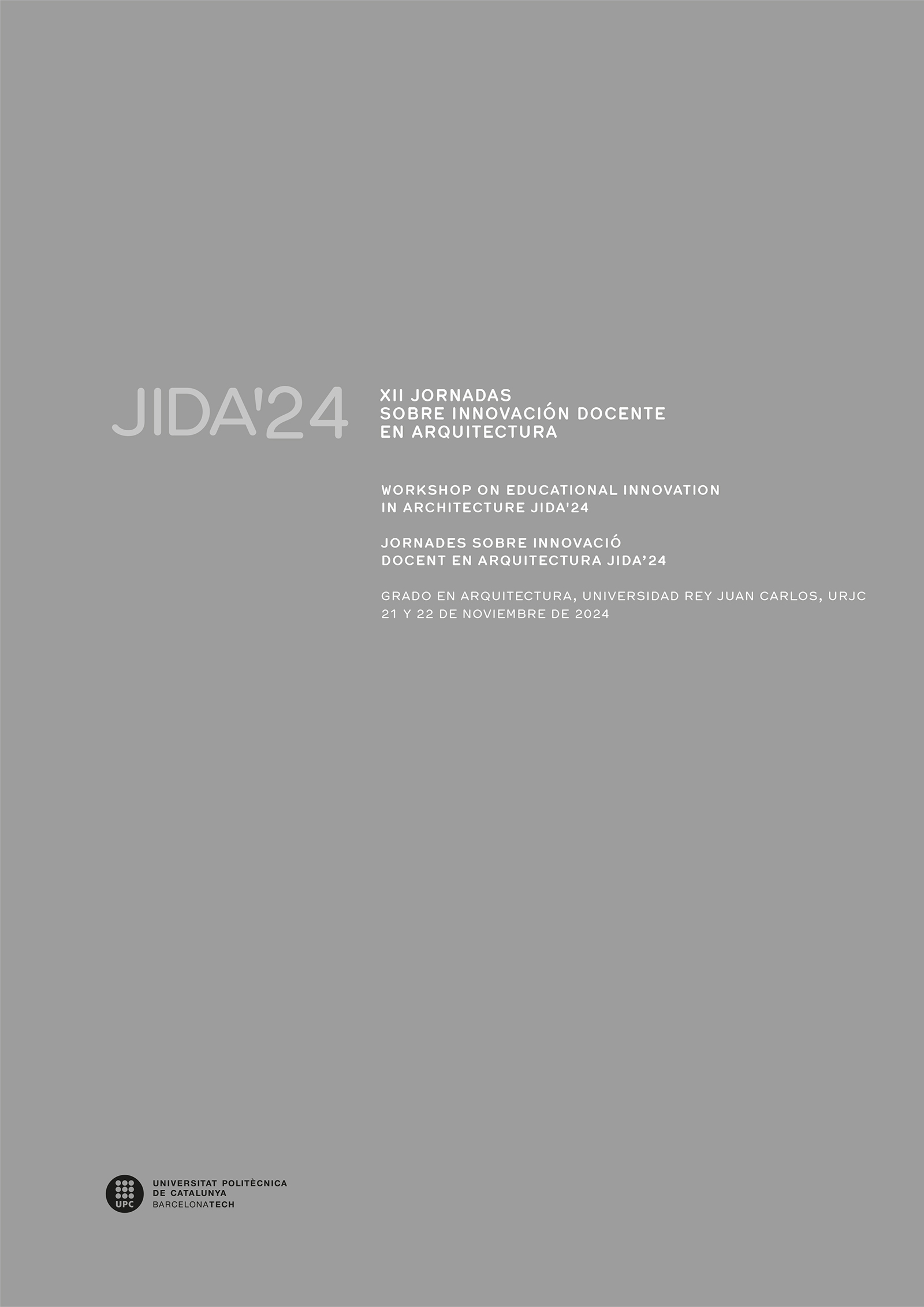Teaching architectural theory from self-regulation: AI in reflexive thinking
DOI:
https://doi.org/10.5821/jida.2024.13285Keywords:
cultural identity, cultural heritage, self-reflection, new teaching methods, application of artificial intelligenceAbstract
The importance of self-recognition in a world where technology surrounds our daily life, the knowledge that the individual essence of the person exists is born from self-reflection. As part of the teaching of theoretical subjects in the architecture career of the Catholic University of Santiago de Guayaquil, a new teaching method was established in the relationship of identity recognition based on the study of the past, of one's own history to being able to understand and appreciate its context and thus establish a new project method for the future through the use of artificial intelligence. The result was an understanding of one's own being that was reflected in the products of their workload.
References
Ayuso-del Puerto, Desirée; Gutiérrez-Esteban. 2022. La Inteligencia Artificial como recurso educativo durante la formación inicial del profesorado, Prudencia La Inteligencia Artificial como recurso educativo durante la formación inicial del profesorado RIED. Revista Iberoamericana de Educación a Distancia, vol. 25, núm. 2, 2022 Asociación Iberoamericana de Educación Superior a Distancia, España. https://www.redalyc.org/articulo.oa?id=331470794017
Berridi Ramírez, Rebeca, y Martínez Guerrero, José I. 2017. Estrategias de autorregulación en contextos virtuales de aprendizaje. Perfiles educativos, 39(156), 89-102. http://www.scielo.org.mx/scielo.php?script=sci_arttext&pid=S0185-26982017000200089&lng=es&tlng=es
Browne, E. 1988. Otra arquitectura en América Latina. Espíritu de la época y espíritu del lugar. Ediciones GG. http://ebrowne.cl/wp-content/uploads/2014/11/1986_espiritu_epoca.pdf
Ganda, D.; Boruchovitch, E. 2018. A autorregulação da aprendizagem: principais conceitos e modelos teóricos. Psicologia da Educação, (46), 71-80. http://pepsic.bvsalud.org/scielo.php?script=sci_arttext&pid=S1414-69752018000100008&lng=pt&tlng=
Grunfeld, Diana N., y Molinari, María Claudia. 2017. La importancia de pensar sobre la escritura en el jardín de infantes. Magis. Revista Internacional de Investigación en Educación, vol. 9, núm. 19, enero, 2017, pp. 31-48 Pontificia Universidad Javeriana Bogotá, Colombia.
Gutiérrez, R. 2012. Una mirada crítica a la arquitectura latinoamericana del siglo XX. Dresde: Universidad de Dresde.
Montaner, J. 2015. Arquitectura y Crítica. Editorial GG. Barcelona, España.
San Andrés, Gilda. Figuras tomadas dentro y fuera de clases en los años 2023 y 2024. FAD, UCSG.






















